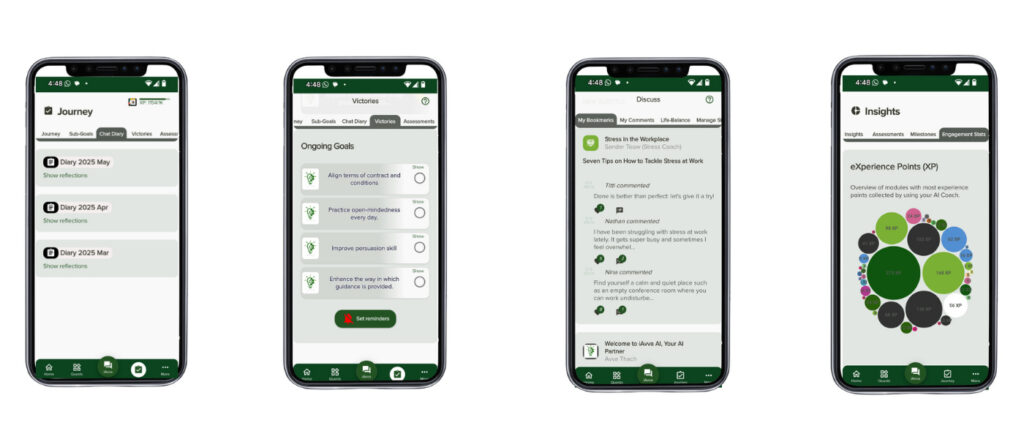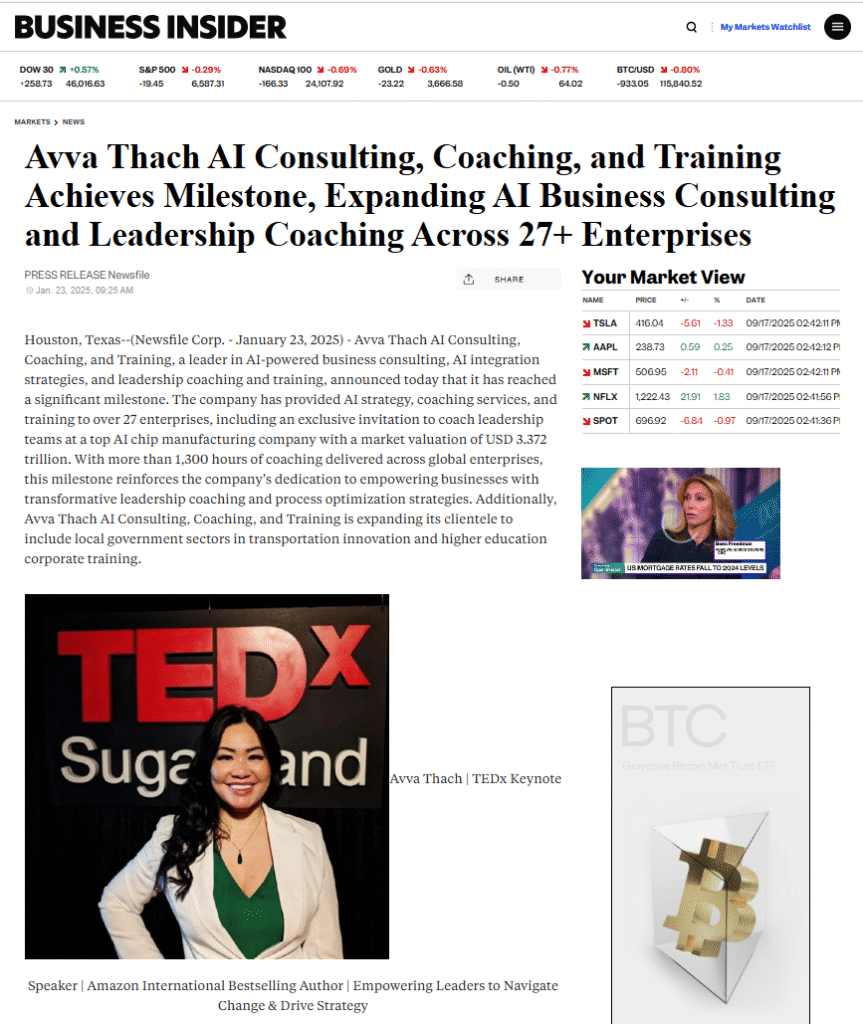10 Innovative Problem Solving Strategies Every Leader Should Master
Introduction
Leadership training isn’t just a nice-to-have; it’s a necessity for survival in today’s fast-paced business landscape. Consider this: companies with comprehensive leadership development programs report 37% more revenue per employee than those without. That’s not just a statistic; it’s a wake-up call for leaders everywhere.
Picture this: you’re at the helm of a team facing an unexpected crisis. The clock is ticking, and your usual problem-solving methods aren’t cutting it. Panic sets in as you realize that traditional approaches won’t suffice in the face of complexity and rapid change. Sound familiar? You’re not alone.
Many leaders struggle with innovative problem-solving, often relying on outdated strategies that fail to address modern challenges. Effective leadership demands adaptability, creativity, and a toolkit of creative techniques to navigate uncharted waters.
Research shows that 68% of leaders recognize that integrating AI strategies with leadership coaching can significantly boost their effectiveness during transformation efforts. If you’re not leveraging these insights, you’re likely falling behind.
This blog post will guide you through ten innovative problem-solving strategies every leader should master. From design thinking to collaborative approaches, these methods will empower you to tackle challenges head-on and build high-performing teams capable of thriving in uncertainty.

The time for transformation is now! Get ready to elevate your leadership skills, enhance your team’s resilience, and redefine what effective leadership looks like in the 21st century.
The Importance of Problem Solving in Leadership
Leaders are like captains navigating through stormy seas. If they can’t steer the ship through turbulent waters, it’s going down. A staggering 84% of organizations anticipate a shortfall in leaders over the next five years, which means effective problem-solving is more crucial than ever.
Think about it: when faced with a crisis, how often do you see leaders freeze up? The pressure can be overwhelming, and many resort to outdated tactics that simply don’t cut it anymore. This isn’t just a minor inconvenience; it’s a major roadblock to success. Leaders need to embrace innovative problem-solving techniques to adapt and thrive.
Effective problem solving enhances team leadership by fostering collaboration and trust. When leaders tackle challenges head-on, they not only resolve issues but also inspire their teams to think creatively and contribute solutions.
Defining Problem-Solving in a Leadership Context
Problem-solving isn’t just about finding the right answer; it’s about asking the right questions. Leaders must cultivate an environment where team members feel safe to voice concerns and propose ideas. This requires strong communication skills for leaders, as well as emotional intelligence in leadership to empathize with team members’ perspectives.
Impact of Effective Problem-Solving on Team Dynamics
A leader who excels at problem-solving can transform team dynamics from reactive to proactive. Consider a scenario where your team faces a sudden drop in performance metrics. Instead of panicking or assigning blame, an innovative leader will gather insights from various team members, analyze data collaboratively, and brainstorm potential solutions together.
- Encourages open dialogue: Teams that communicate freely are more likely to produce creative solutions.
- Builds resilience: When teams work through problems together, they develop trust and adaptability.
- Inspires ownership: Team members feel more invested in outcomes when they contribute to solutions.
Linking Problem-Solving to Organizational Success
The ripple effect of strong problem-solving skills extends beyond individual teams; it can propel entire organizations toward success. A culture that prioritizes innovative problem solving leads to improved decision-making processes and higher employee satisfaction rates-both critical components of effective leadership.
Companies that invest in leadership development, particularly through tailored programs such as leadership courses, report higher engagement levels among employees. Engaged employees are 17% more productive and 21% more profitable for their organizations (Gallup).
The takeaway? Embrace innovative problem-solving strategies as part of your leadership training. By doing so, you’ll not only enhance your own effectiveness but also empower your teams to navigate challenges with confidence. The question is: are you ready to lead the charge?
Overview of Innovative Problem Solving Strategies
Imagine you’re in a meeting, and someone throws out a problem that seems insurmountable. Suddenly, all eyes are on you-your heart races, and you feel the pressure mount. The truth is, many leaders experience this moment of panic. But what if I told you that effective problem-solving strategies can turn these tense situations into opportunities for innovation?
Here’s a jaw-dropper: only 10% of CEOs believe their company’s leadership development initiatives have a clear business impact (McKinsey). This isn’t just a statistic; it highlights a critical gap in how organizations approach leadership training. If leaders are not equipped with innovative problem-solving strategies, they’re essentially flying blind.
In the realm of leadership training, the need for adaptability and creativity has never been more pressing. Traditional methods simply don’t cut it anymore. The modern leader must be armed with an arsenal of innovative techniques to tackle challenges head-on and inspire their teams to do the same.
Research indicates that organizations embracing innovative problem-solving approaches report higher employee engagement and retention rates. It’s not just about solving problems; it’s about creating a culture where solutions thrive.
This section will introduce you to ten groundbreaking strategies that will revolutionize your approach to problem-solving as a leader. From design thinking to scenario planning, these methods will empower you to create high-performing teams ready to adapt and excel in any situation.

The world is changing rapidly, and so should your leadership skills. Ready to dive into these innovative strategies? Let’s get started!
Strategy 1: Design Thinking
Design thinking isn’t just a buzzword; it’s a game-changer for leaders aiming to tackle complex problems with creativity and empathy. Think about this: 71% of companies do not feel their leaders are able to lead their organization into the future (DDI). This stark reality underscores the need for innovative approaches like design thinking in leadership training.
Many leaders find themselves stuck in a rut, relying on tried-and-true methods that simply don’t resonate with today’s fast-paced environment. Enter design thinking-a human-centered approach that emphasizes understanding user needs and iterative problem-solving. Imagine transforming your team from merely reactive to proactively innovative. Sounds appealing, right?
By integrating design thinking into your leadership development, you can foster an environment where creativity flourishes, leading to better solutions and stronger team dynamics.
Understanding User-Centered Design Principles
This is where the magic begins. User-centered design focuses on deeply understanding the people you’re serving-whether they’re customers, employees, or stakeholders. Leaders must cultivate empathy by stepping into the shoes of their users, which involves:
- Observation: Watch how people interact with your product or service.
- Interviews: Talk directly to users about their experiences and pain points.
- Feedback Loops: Create channels for continuous input from users throughout the development process.
The goal? To identify real problems worth solving rather than making assumptions based on outdated data or gut feelings. This approach not only enhances team leadership but also builds trust as team members see their insights valued in decision-making processes.
Implementing Iterative Prototyping and Testing
No more waiting until a project is “perfect” before launching! With design thinking, leaders embrace an iterative process that allows for rapid prototyping and testing of ideas. Here’s how it works:
- Prototype Quickly: Create simple versions of your solution without getting bogged down by perfectionism.
- Test Early: Share prototypes with users to gather feedback before full implementation.
- Refine Continuously: Use feedback to iterate on solutions, ensuring they meet user needs effectively.
This iterative approach not only accelerates problem-solving but also cultivates a culture of experimentation within teams. It encourages members to take risks without fear of failure-a vital component of effective leadership in today’s dynamic business landscape.
The takeaway? Embracing design thinking as part of your leadership coaching can dramatically enhance your problem-solving capabilities. By focusing on empathy and iteration, you’ll not only improve outcomes but also empower your teams to innovate confidently. So what’s stopping you? Start integrating these principles today!
Strategy 2: Collaborative Problem Solving
Ever tried to solve a complex problem alone and ended up feeling like you were wrestling a bear? Spoiler alert: it’s not fun. In fact, 72% of leaders believe that collaboration is essential for effective problem-solving (Harvard Business Review). If you’re still clinging to the idea that solo genius is the way to go, it’s time for a reality check.
Collaborative problem solving isn’t just about gathering a group and shouting ideas until something sticks. It’s about harnessing the diverse perspectives of your team to create innovative solutions. When leaders embrace collaboration, they unlock the potential of their teams and foster an environment where creativity thrives. Think of it as assembling the Avengers-each member brings unique powers to tackle any villain that comes your way!
Research indicates that organizations with strong collaborative cultures are five times more likely to be high-performing. So, if you’re not prioritizing collaboration in your leadership training, you’re missing out on a powerful driver of success.
Building Diverse Teams for Creative Solutions
Diversity isn’t just a buzzword; it’s your secret weapon in problem-solving. When you gather individuals from different backgrounds, experiences, and viewpoints, you create a melting pot of ideas ripe for innovation. Imagine a team where every voice is heard-a place where introverts and extroverts alike can contribute without fear of judgment.
- Foster Inclusion: Ensure that all team members feel valued and empowered to share their thoughts.
- Leverage Strengths: Identify each member’s unique skills and assign roles accordingly.
- Encourage Cross-Functional Collaboration: Break down silos by involving diverse departments in brainstorming sessions.
A great example? Think about how Pixar assembles its creative teams. They don’t just throw together random artists; they carefully curate groups with varied skills, ensuring that everyone contributes to the storytelling process. This approach has led them to produce some of the most beloved films in history!
Facilitating Open Communication and Brainstorming Sessions
The key to successful collaborative problem solving lies in open communication. Leaders must cultivate an atmosphere where team members feel safe expressing their ideas-no matter how wild they may seem. Remember, some of the best solutions emerge from seemingly outrageous concepts!
- Set Clear Objectives: Define what you’re trying to achieve during brainstorming sessions.
- Use Structured Techniques: Implement methods like mind mapping or round-robin sharing to ensure everyone participates.
- Embrace Constructive Feedback: Encourage team members to provide feedback on each other’s ideas rather than shutting them down.
A common pitfall is allowing dominant personalities to overshadow quieter voices during discussions. To combat this, leaders can rotate facilitators or use anonymous idea submissions to level the playing field.

The takeaway? Collaborative problem solving enhances leadership skills by promoting creativity, inclusivity, and shared ownership over solutions. By fostering an environment where all voices matter, you’ll not only solve problems more effectively but also build high-performing teams ready to tackle any challenge head-on. Are you ready to unleash the power of collaboration?
Strategy 3: Root Cause Analysis (RCA)
Ever found yourself in a situation where you’re just putting out fires instead of solving the underlying issues? It’s frustrating, isn’t it? A whopping 70% of organizational change initiatives fail due to a lack of understanding of the root causes behind problems (McKinsey). If you’re not diving deep, you’re just scratching the surface.
Root Cause Analysis (RCA) is like playing detective in your own organization. It’s not about treating symptoms; it’s about unearthing the real culprits behind your challenges. Imagine your team is facing persistent delays in project delivery. Instead of blaming individual contributors or processes, RCA encourages leaders to dig deeper and ask, “What’s really going on here?”
By mastering RCA as part of your leadership training, you empower yourself and your teams to identify and resolve issues at their source, leading to lasting improvements and enhanced organizational leadership.
Techniques for Identifying Underlying Issues
RCA isn’t a one-size-fits-all approach; it requires a toolkit of techniques to effectively uncover the hidden problems. Here are some tried-and-true methods:
- 5 Whys: Keep asking “why” until you reach the root cause. This technique often reveals unexpected insights.
- Fishbone Diagram: Visually map out potential causes and effects related to the problem at hand.
- Pareto Analysis: Use the 80/20 rule to identify which problems are causing the most significant impact.
A real-world example: A tech company discovered that its product launch delays stemmed from miscommunication between teams. By employing the 5 Whys technique, they traced it back to unclear roles and responsibilities-an issue that was easily fixable with better communication protocols.
Using Data to Inform Decision-Making Processes
The data-driven approach is indispensable in RCA. It’s not just about gut feelings or anecdotal evidence; it’s about leveraging hard facts. Here’s how you can incorporate data into your RCA efforts:
- Collect Relevant Data: Gather quantitative and qualitative data related to the issue at hand-surveys, performance metrics, customer feedback-all can provide valuable context.
- Analyze Patterns: Look for trends over time that may indicate systemic issues rather than one-off events.
- Implement Solutions Based on Findings: Once you’ve identified root causes through data analysis, develop targeted strategies to address them effectively.
A common misconception is that RCA is only necessary for large-scale failures. In reality, even minor issues can compound over time if left unaddressed. For instance, if a team consistently misses deadlines due to unclear expectations, addressing this through RCA can prevent future chaos-and save countless hours down the line.
The takeaway? Root Cause Analysis is an essential component of effective leadership training that equips leaders with the decision-making skills necessary for sustainable success. By honing this skill set, you’ll not only resolve current challenges but also foster a culture of continuous improvement within your organization. Ready to dig deeper?
Strategy 4: Agile Methodologies
Imagine trying to navigate a maze blindfolded. That’s what many leaders feel like when faced with complex problems and rigid processes. A staggering 70% of organizations report that they struggle to adapt to changing circumstances (Gartner). If your problem-solving approach isn’t agile, you’re likely stuck in a frustrating loop of inefficiency.
Agile methodologies offer a refreshing shift from traditional top-down approaches to a more dynamic, iterative process. Think of it as trading in your clunky old car for a sleek, responsive sports model. Instead of waiting for the perfect solution to emerge, agile encourages teams to experiment, learn, and adapt quickly. It’s about embracing change rather than fearing it.
Research shows that organizations employing agile practices are 60% more likely to achieve their project goals compared to those using traditional methods (Scrum Alliance). If you’re not integrating agility into your leadership training, you’re missing out on a powerful tool for innovative problem-solving.
The Role of Agility in Rapid Problem Resolution
Agility is all about responsiveness. When unexpected challenges arise, agile teams can pivot quickly without getting bogged down by bureaucracy. For example, consider how software development teams use sprints-short cycles where they focus on delivering small increments of work. This method allows them to gather feedback frequently and adjust their course as needed.
- Iterative Development: Break projects into manageable pieces that can be completed quickly.
- Frequent Feedback: Regular check-ins with stakeholders ensure alignment and allow for real-time adjustments.
- Empowered Teams: Teams are given the autonomy to make decisions, fostering ownership and accountability.
A real-world example? Spotify’s squad model allows teams to operate like mini-startups within the larger organization. Each squad is responsible for specific features or services, enabling rapid innovation while maintaining alignment with overall company goals.
Adapting to Changing Circumstances and Feedback Loops
The beauty of agile methodologies lies in their built-in feedback loops. When leaders create an environment where feedback is valued and acted upon, they foster a culture of continuous improvement. This means that instead of waiting until the end of a project to evaluate success, teams assess progress regularly and make necessary adjustments along the way.
- Daily Stand-ups: Short daily meetings keep everyone aligned on priorities and challenges.
- Retrospectives: After each sprint or project phase, teams reflect on what went well and what could be improved.
- Customer Involvement: Engaging customers throughout the process ensures that solutions meet real needs effectively.
A common misconception is that agile means chaotic or unstructured; however, it actually requires discipline and clear frameworks to succeed. Leaders must balance flexibility with accountability-ensuring that while teams are free to innovate, they remain focused on delivering value consistently.

The takeaway? Embracing agile methodologies as part of your leadership coaching can transform your problem-solving capabilities. By fostering an environment where adaptability thrives, you’ll empower your teams not just to solve problems but also to innovate continuously. Are you ready to lead with agility?
Strategy 5: Scenario Planning and Simulation
Ever had that moment when you wished you had a crystal ball? You’re not alone. A staggering 90% of executives believe scenario planning is essential for navigating uncertainty (McKinsey). The reality is, in today’s volatile business landscape, leaders who can anticipate potential futures are the ones who thrive.
Scenario planning isn’t just a fancy term tossed around in corporate boardrooms; it’s a powerful tool that allows leaders to envision various futures and prepare for them. Imagine being able to predict the impact of market shifts or technological advancements before they happen. Sounds like magic, right? Well, it’s not; it’s just smart leadership.
Integrating scenario planning into your leadership training equips you with the foresight needed to make informed decisions and guide your teams through uncertainty with confidence.
Creating Hypothetical Scenarios for Strategic Foresight
- Best Case: Rapid adoption due to high demand and minimal competition.
- Worst Case: Market saturation with fierce competition leading to slow sales.
- Realistic Case: Moderate interest with steady growth over time.
This exercise not only helps in identifying potential risks but also fosters creative thinking among team members as they brainstorm responses to each scenario. It’s like playing chess-always thinking two moves ahead!
The Benefits of Simulation Exercises for Leaders and Teams
Simulation exercises take scenario planning a step further by allowing teams to role-play their responses in real-time. This hands-on approach can be incredibly revealing. Here’s what makes simulations a game-changer:
- Enhances Decision-Making Skills: By practicing responses in simulated environments, leaders sharpen their decision-making skills under pressure.
- Builds Team Cohesion: Working together in simulations fosters collaboration and strengthens team dynamics-essential elements of effective leadership.
- Encourages Innovation: Teams are more likely to think outside the box when they’re not constrained by real-world consequences during simulations.
A real-world example? Consider how airlines conduct simulation training for pilots. They create various emergency scenarios that require quick thinking and teamwork, ensuring pilots are prepared for any situation that may arise mid-flight. This level of preparation isn’t just crucial for aviation; it can be applied across industries!
The takeaway? Scenario planning and simulation should be integral components of your leadership development. By proactively envisioning potential futures and practicing responses, you’ll empower yourself and your team to navigate challenges confidently. Ready to take the leap into strategic foresight?
Strategy 6: Mind Mapping Techniques
Ever felt your thoughts spiraling out of control while trying to tackle a complex problem? You’re not alone. Studies show that over 80% of people struggle to organize their ideas effectively (American Psychological Association). If you’re still using linear notes, it’s time to upgrade your game with mind mapping.
Mind mapping is like giving your brain a visual playground. Instead of wrestling with traditional note-taking, you create a colorful diagram that connects ideas in a way that mirrors how our brains actually work. Imagine being able to visualize the entire landscape of a problem, making connections you might otherwise overlook. Sounds like magic? It’s just smart strategy!
Incorporating mind mapping into your leadership training can enhance clarity and foster creativity among team members, leading to innovative solutions that drive results.
Visualizing Complex Problems for Clarity
The beauty of mind mapping lies in its ability to break down complex problems into digestible components. Instead of getting lost in the weeds, you can see the big picture and how each piece fits together. Here’s how you can use mind mapping effectively:
- Start with a Central Idea: Write the main problem in the center of your map; this is your anchor.
- Branch Out: Create branches for related sub-issues or ideas, allowing for organic growth as thoughts develop.
- Use Colors and Images: Incorporate visuals to stimulate creativity and make the map more engaging.
A real-world example? Think about how tech giants like Google use mind maps during brainstorming sessions. They encourage teams to visually explore ideas, leading to breakthrough innovations that keep them ahead of competitors.
Encouraging Creative Thinking Through Structured Brainstorming
Mind mapping isn’t just about organization; it’s a powerful tool for sparking creativity within teams. When leaders implement structured brainstorming sessions using mind maps, they create an environment where every voice counts and wild ideas are welcome. Here’s how to facilitate this process:
- Set Clear Goals: Define what you hope to achieve during the session-whether it’s solving a specific problem or generating new product ideas.
- Encourage Free Thinking: Remind participants there are no bad ideas; every thought contributes to the bigger picture.
- Iterate Together: Allow team members to build upon each other’s ideas by adding branches or connecting different thoughts on the mind map.
A common pitfall is allowing dominant personalities to overshadow quieter team members during these sessions. To combat this, consider using anonymous submissions for initial ideas before sharing them openly on the mind map-this levels the playing field!
The takeaway? Mind mapping not only enhances leadership skills, but also empowers teams to think creatively and collaboratively when tackling challenges. By visualizing problems together, you’ll unlock innovative solutions that might have otherwise remained hidden. Ready to unleash your team’s creative potential?
















Leave a Reply